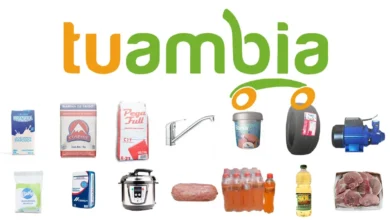Fiber Foods Charts for Constipation: Unlocking the Key to Digestive Health


fiber foods charts for Constipation is a common concern that affects people of all ages. It’s not only uncomfortable but can also have a significant impact on overall well-being. One of the critical factors in promoting digestive health and preventing constipation is a diet rich in fiber.
Understanding Constipation
Causes and Symptoms
Constipation can result from various factors, including a low-fiber diet, inadequate fluid intake, lack of physical activity, or certain medical conditions. Common symptoms include infrequent bowel movements, difficulty passing stools, and a sense of incomplete evacuation.
Impact on Overall Health
Beyond the discomfort it causes, chronic constipation can lead to complications such as hemorrhoids, anal fissures, and a sluggish digestive system. Understanding the root causes is essential for effective prevention and management.
The Role of Fiber foods in Digestive Health
Soluble vs. Insoluble Fiber foods
Fiber is broadly categorized into soluble and insoluble types. Soluble fiber forms a gel-like substance in the digestive tract, helping with stool softening, while insoluble fiber adds bulk, aiding in regular bowel movements.
Daily Fiber Recommendations
Health experts recommend a daily intake of fiber to maintain optimal digestive function. This can vary based on age, gender, and overall health, but a general guideline is around 25 grams for women and 38 grams for men.
Top Fiber-Rich Foods
Whole Grains
Whole grains such as oats, quinoa, and brown rice are excellent sources of fiber foods. They provide sustained energy and promote digestive regularity.
Fruits and Vegetables
Including various fruits and vegetables in your diet ensures a diverse range of fiber foods. Berries, apples, broccoli, and spinach are notable choices.
Legumes and Pulses
Beans, lentils, and chickpeas are rich in both soluble and insoluble fiber foods . They are versatile ingredients for soups, salads, and main dishes.
Nuts and Seeds
Almonds, chia seeds, and flaxseeds are nutrient-dense additions contributing to your daily fiber food goals.
Creating Your Fiber Foods Chart
Customizing Based on Dietary Preferences
Tailoring your fiber foods intake to your culinary preferences ensures sustainability. Explore different foods and recipes to find what works best for you.
Meal Planning Tips
Incorporate fiber-rich foods into every meal. Plan a weekly menu to ensure a well-balanced and varied diet.
Hydration and Fiber
Importance of Water
While fiber food is crucial for digestive health, staying hydrated is equally important. Water helps fiber do its job by softening and bulking up stools.
Balancing Fluid Intake
Ensure a balance between fiber intake and fluid consumption. Increase water intake significantly when increasing fiber to prevent potential constipation.
Fiber Supplements
When and How to Use Them
In some cases, dietary fiber supplements may be necessary. Consult a healthcare professional to determine the right supplement and dosage for your needs.
Precautions and Consultation
Using fiber supplements without proper guidance can have adverse effects. Seek advice from a healthcare provider to avoid potential complications.
Incorporating Fiber into Daily Meals
Breakfast Ideas
Start your day with a fiber-rich breakfast, such as oatmeal with fruits or whole-grain toast with avocado.
Lunch and Dinner Options
Include vegetables, legumes, and whole grains in your main meals. A quinoa salad or a bean stew are excellent choices.
Snacking Strategies
Opt for healthy snacks like fresh fruit, vegetable sticks with hummus, or a handful of nuts to boost your fiber intake between meals.
Tips for Consistent Fiber Intake
Gradual Increases
Introduce fiber gradually to allow your digestive system to adjust. Sudden increases may cause bloating or discomfort.
Reading Food Labels
Become familiar with food labels to identify fiber-rich products. Choose whole, unprocessed foods whenever possible.
Cooking and Preparation Techniques
Preserve the fiber content in your foods by using cooking methods like steaming or roasting. Avoid overcooking, as it may lead to nutrient loss.
Exercise and Constipation
Physical Activity’s Impact on Digestive Health
Regular exercise promotes overall well-being, including a healthy digestive system. Incorporate activities like walking, jogging, or yoga into your routine.
Incorporating Movement into Daily Routine
Simple lifestyle changes, such as taking the stairs or stretching regularly, contribute to improved bowel regularity.
Myths and Facts about Fiber and Constipation
Common Misconceptions
Addressing myths surrounding fiber and constipation, such as the belief that all fiber causes bloating, provides clarity for effective dietary choices.
Evidence-Based Information
Presenting scientifically supported facts ensures readers make informed decisions about their fiber intake, dispelling misinformation.
Recipes for a Fiber-Rich Diet
Tasty and Healthy Meal Suggestions
Explore delicious recipes that prioritize fiber, turning healthy eating into a delightful culinary experience.
Cooking Methods to Preserve Fiber Content
Learn cooking techniques that maintain the nutritional integrity of fiber-rich ingredients for maximum health benefits.
Success Stories
Personal Experiences with Improved Digestive Health
Real-life stories of individuals who transformed their digestive health through a fiber-rich diet inspire and motivate.
you may read digitalfastnews





